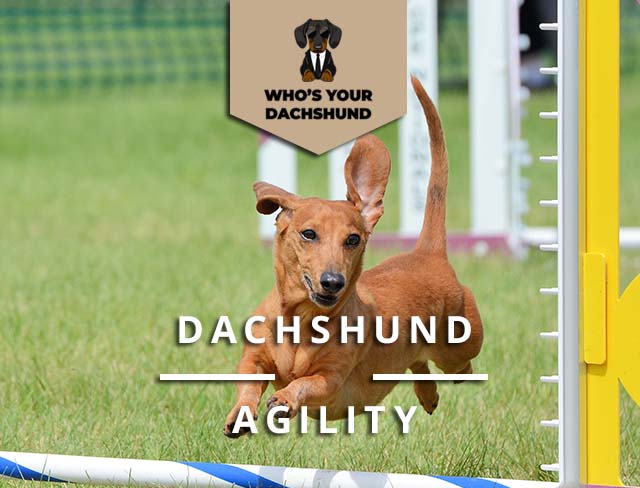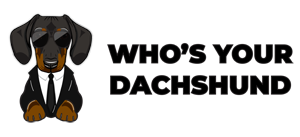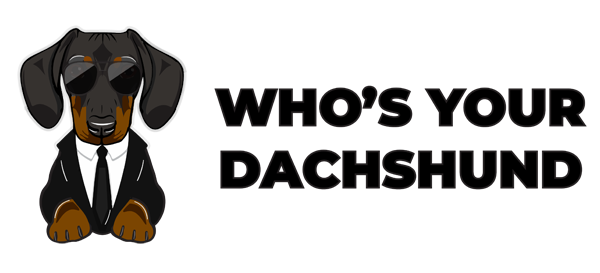
Dachshund agility is a fun game for dogs to play. They compete by running through an obstacle course as fast as possible. There are many different types of obstacles, such as tunnels, A-frames, and jumps. Dogs compete in a wide variety of classes based on breed, weight, and age.
Although there is a wide variety of dachshund agility competitions, the National Dachshund Agility Championship (NDAC) is the most prestigious. This championship even includes an Agility Masters division, which allows only 20 dogs to compete in each discipline. The NDAC has been held every year since 1995, except for 2002. The championship is held every year at a different location, and a different kennel hosts it.
The nine primary events in the National Dachshund Agility Championship are:
- Jumping Ouray: A A-frame jumps over grass and height of obstacles as dogs run through it while going down an agility ring. Dogs must leave the running line no more than once to remain in the game.
- Agility Free For All: A dog can complete any combination of obstacles on its own or with other dogs. The handler and the dog must stay within a designated area at all times while competing in this event. Dogs run through an obstacle course and must leave the running line only once to continue their course.
- Agility Dogon: Dogs must pass through a course of obstacles while staying within a designated area. Dogs can only pass through the course on their own. The handler stays within the running line at all times but may leave the running line to retrieve a dog that has fallen during its run.
- Agility Benches: A bench with a lid covers an obstacle and must be jumped over by the dogs as they approach. The dogs leave the running line once to jump over it, then remain in bounds to complete the course.
- Jumping Poodles: A dog must jump over a series of small hurdles as it runs through an area filled with obstacles. The dog leaves the running line to jump over each hurdle but must remain in bounds before moving on to the next one.
- Jumping Weave Poles: Using a weave pole (a pole with holes in it), dogs run through an obstacle course while weaving around poles. Dogs must leave the running line to weave around poles.
- Tunnel: A tunnel has numerous small doors on the sides, and dogs must push through them as they run through the obstacle course. They can leave the running line as they go through an obstacle but must return to the starting position before moving on to the next one.
- Jumping Teeter Totters: A teeter-totter is a table with legs about six inches off the ground. A dog must jump over a series of small teeter-totters and remain on the table as it moves through an obstacle course. The dogs can leave the running line to exit the table but must return to the starting position before moving on to the next.
- Jumps: Dogs race through an obstacle course and over jumps as they run through it. The dogs might also leave the running line to accomplish this.
Jump height at these events is drastically different from non-dachshund agility, and dog handlers must know this. Each jump is different, and there are many differences in the jumps between each event. The NDAC has a table outlining jump heights and measurements for each event’s website.
What is Agility?
Agility is a noun that means “the general capacity for a quick, effective response to change.” Agility is about knowing how to react quickly; it’s the ability to be nimble and respond quickly. Agility is a type of training that helps dogs learn how to be more responsive and alert. Agility can help you develop a more confident, independent dog overall better off because of agility training. Agility classes are not the same as obedience classes. Obedience classes teach a dog what to do in a particular situation, and agility classes teach the dog how to respond to that situation. The idea of agility training is to give the dog a job they must perform on command to develop their strengths and help them be happy. It also gives them an outlet for the energy they have built up from their busy days exploring the world around them. At Agility classes, dogs will run an agility course and jump over hurdles and over jumps as they do so. The handler can be inside or outside of the course, depending on the agility event type, but handlers cannot give their dogs commands unless they are in the ring.
What is the Requirement For Agility?
An agility course has many obstacles for the dog to jump over. The distance from the height of the obstacle varies, and this is the problem that dogs need to solve.
You can see two poles on either side of a hurdle (12 inches). Both poles are at different heights (10 and 6 inches). If you stood on one end of each pole, you would be exactly level with each obstacle. If one pole were higher than the other, you wouldn’t be level.
The criteria used to judge a dog’s ability to jump over this obstacle are the length of stride and accuracy:
Length of stride = the distance between the rear legs as they leave the ground to gain height. It is measured from the front of one hind leg to the front of the other hind leg. In general, a longer stride allows for greater height along with a quicker speed of performance.
Accuracy = this is a judgment made by a judge or instructor using visual clues and listening to how the dog moves over the obstacle.
Styles: [NOTE: there are three types – speed, power, and jumpers. Each is best suited to certain types of work. It’s not clear to me what type is best for agility]
Speed – (often called gap) – the dog starts at rest or stationary on one side and then makes a run at the obstacle going into the obstacle’s head height. At its highest point, the body remains straight, and the legs are almost extended to make a continuous movement over the obstacle. A dog’s ability to take off from standing still or moving is referred to as lateral speed.
What are the Benefits of the Dachshund Agility Course?
Dachshund agility training is an excellent way to help your wiener dog get in shape and have a ton of fun while doing it. Not only does it guarantee an increased heart rate, but it also builds muscles, and it may help you develop better coordination. Sometimes, dogs will even show an increased problem-solving ability, and they will be able to learn new things about their training. There are many benefits to agility training, and a lot of them are just about having fun with your dog.
What Are the Advantages of Dog Agility Classes?
There are many advantages to dog agility classes, and they can be listed into four main categories.
Athletic Ability: Dogs of all sizes can participate in agility classes. They will have the opportunity to run and jump over hurdles and jumps, all while getting in shape. If you are looking for a new way to keep your dog’s mind engaged, agility training is an excellent option for you.
Motivation: When you see another person doing something that seems fun and easy, likely, the activity will also be fun and easy for your dog. Agility training motivates your dog, and motivated dogs can learn quickly.
Confidence: Many dogs that participate in agility training become more confident in themselves. They learn that they can perform tricks and obstacles, even if they have some fears or anxieties at first. These classes will help you show your dog what it is capable of, and it will boost its overall confidence level.
Fun: Agility classes provide fun for both you and your dog. Just imagine how fun it is for your dog to be out with other dogs and then come home tired and worn out with a smile on its face. Agility classes are a great way to make both you and your dog happy at the end of the day.
What Are the Disadvantages of Dog Agility Classes?
There are also some disadvantages to consider before enrolling in agility classes.
Expensive: Agility classes can be pretty expensive, especially if you train multiple dogs. You may have to pay for the agility class itself and the agility equipment that your dog will need. While this is not an overly large expense, it is considered before signing up for these classes.
Not suitable for the elderly: Agility classes are often geared towards people who are not too elderly. However, if you have a senior member of your family, it may not be easy to ensure that they can attend classes with their dog. If you intend to enroll your dog in agility classes, please speak with your vet and ensure that they don’t have any physical limitations.”
What’s the Best Diet for a Dachshund?
The Dachshund is an active dog with a high energy level and quick reflexes. A Dachshund does well with regular exercise and has no weight issues, but it does require a proper diet to stay in shape. The amount of food that a Dachshund needs depends on its age, but it should get about one pound of food per day for every month of age. The higher energy dogs need twice as much food. The Dachshund is an active dog with a high energy level and quick reflexes. He does well with regular exercise and has no weight issues, but he does require a proper diet to stay in shape. The amount of food that a Dachshund needs depends on his age, but he should get about one pound of food per day for every month of age. The higher energy dogs need twice as much food.
Dachshunds are omnivores, which means they eat both plants and meat. They will eat dog food and raw meat. However, the best diet for a Dachshund is high-quality dog food. Your Dachshund’s diet should include:
- Dog food that is high in protein and low in carbohydrates helps build muscle.
- High-fiber foods to help with digestion
- Calcium helps keep teeth strong and prevents them from snapping or chipping.
- Vitamin C helps dogs stay healthy and avoid the common cold.
- Fish oil for dogs to boost immunity and aid in heart health.
- Herbal remedies from a compounding pharmacy to help with immune support, pain, or other conditions. (Find them online.)
Hemorrhage diet for dogs
The Rags to Riches Diet & Care for Dogs is a low-carbohydrate dog food that helps with nutrient absorption and reduces the risk of bleeding disorders.
Why Do Dachshunds Need Light Exercise?
While the Dachshund is one of the most active dogs, he requires light exercise. He has a tendency to put on weight, so many owners keep him on a diet and exercise him regularly.
How Much Exercise Does a Miniature Dachshund Need?
Miniature Dachshunds are among the smallest dogs’ breeds, and they have a low exercise tolerance. They require 30 minutes of daily exercise, but no more than an hour. They are energetic little dogs that love to play, and they should never be allowed to become bored. If they are not given adequate exercise, they can become unruly and difficult to manage.
Do Miniature Dachshunds Need a Walk/Exercise?
Yes, a miniature dachshund needs daily walks if it is a young or an older dog. When walking them, make sure that you have a long leash with a harness and show them where you are going. Try to avoid letting them walk on the grass, as they have sensitive stomachs.
A yard or fenced area is a good idea for a miniature dachshund. With this method of releasing the dogs, they can run and play freely without being walkers for long periods. They enjoy digging in the dirt, so you shouldn’t have any windowsills or other delicate areas outside.

